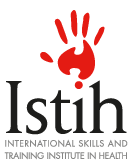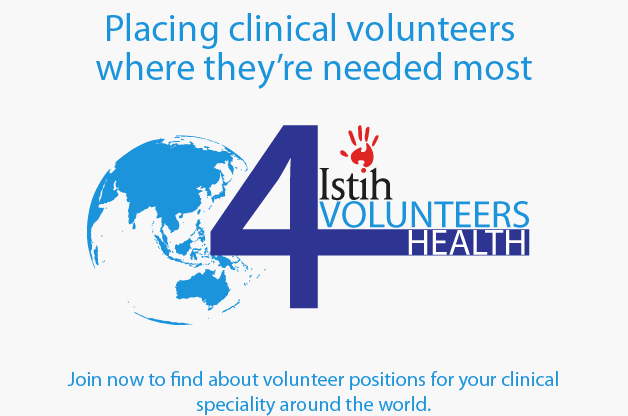Sandy Daniels
Western Australia Registered Nurse
Visit to Kathmandu, Nepal
27/8/2016
My first trip to the Spinal Injury Rehabilitation Centre (SIRC) in Kathmandu, Nepal was in January 2016. I had been requested to assist with training of nursing and allied staff in regards to spinal cord injured patients.
On arrival I ascertained that the level of education and standard of care within the unit were actually of a high standard, considering the fuel shortages, freezing temperatures and general lack of consumable resources. I identified areas that I could assist in training and implemented those whilst there, leaving teaching programs and presentations so that the training could continue.
Whilst preparing these training programs I became aware that the Centre did not have access to a defibrillator for first line management of a patient with a cardiac event. The Centre is a rehabilitation centre, and not close to a tertiary hospital and the staff are not experienced in handling acute cardiac emergencies. My recommendation was to provide the Centre with an Automatic External Defibrillator (AED) which does not require medical expertise but would allow the staff to effectively respond in a timely manner to a collapsed, unresponsive patient.
The staff were initially cautious of this offer due to the fact that they were only exposed to older versions of defibrillators wherein the Doctor would identify the heart condition and would then deliver any shocks required. My explanation was that the AED could be safely used by inexperienced personnel and internationally was available in many public areas. The fact that they have visiting dignitaries and otherwise seemingly healthy staff who could also be at risk of a cardiac event was the sway point.
BeneHeart D1 MindRay Public SemiAutomatic External Defibrillator
The AED is designed to be reliable, simple and easy to use by any rescuer to respond to Sudden Cardiac Arrest in a variety of locations.
Large 7” TFT Display offers clear guidance with colour animations, Auto adjustable volume and screen brightness allow you to comfortably use the D1 in a variety of environments. Pre-connected adult pads save time and the pads connector can be used on paediatric patients using a quick-change softkey so that a lower energy dose is delivered to paediatric patients.
The disposable battery with extended capacity supports more than 300 shocks at 200J.
Training
The staff at SIRC consist of 15 nurses, 5 nursing assistant/orderlies and 18 physiotherapists/occupational therapists. There were also four trainee physiotherapists from Denmark and one permanent resident Doctor.
A PowerPoint program, a self-directed learning program, competency and checklist were developed for the introduction education on the AED.
Over a period of five days 41 staff members were trained in the indications, precautions and procedure for defibrillation inclusive of basic life resuscitation.
Improvements at SIRC since the last visit
MSF had assisted with funding an expansion of the facilities at SIRC after the earthquake of April 2015. The roof area was upgraded for administration offices and smaller patient rooms.
These smaller rooms are being utilised for patient who are either getting close to the end of their rehabilitation and increasingly independent of nursing care or patients who have been recalled for a review of their spinal injury progress. The families usually attend with the patient so there may be 2 or 3 families in a 6 bed room.
A temporary tent in the garden of the Centre was donated by Save the Childrens’ fund as a play centre and classroom. This has been removed and the children’s room furnished and opened on the top floor.
There are currently less children in attendance (patients or patient’s family) so classes have been reduced but access to the room is always available. It was pleasing to see that this area was clean, tidy and treated with respect with all books and games in good repair.
Previously urodynamics and cystometry were being performed in the Doctor’s office. Limited access to a toilet, clean water and privacy within this area was not ideal. A dedicated room has now been allocated to the urology examinations which will allow a reduction in the risks of infection from this procedure.
The staff still do not have access to an effective, efficient bladder scanner to determine the volume of the spinal cord injured patient’s bladder.
The power supply interruptions and limited gas/diesel were having a significant impact on daily life on my previous visit. With an improvement in supply the kitchen staff no longer have to cook outside in the garden and renovations in the kitchen area allow them to maintain a higher level of hygiene. Hand basins have been installed in the dining room area.
Increased awareness of hand hygiene in the patient and treatment areas has improved with more bottles of hand gel available for use but access to wash basins and wards areas is virtually nil. This is partly due to the fact that wash basins in the ward areas are in a separate room which is not accessible to patients or staff as “the families keep leaving them dirty”. The lack of soap and paper towels also reduces the opportunity to wash hands.
Dr Ajay Thapa, Emergency Physician
I took a taxi to the Grande International Hospital; approx. 40 minutes’ drive from central Kathmandu.
Ajay was extremely pleased to meet with me and proudly showed me the improvements he has implemented at the hospital as the Head of the Emergency department. He has set up a triage area, instigated a paramedical retrieval service utilising helicopter and ambulance and created dedicated rooms for resuscitation, treatment and examination of patients within the department.
He has developed procedures, protocols and training programs based on the education he received whilst in Australia and from ISTIH. He said that he was proud to say that his team is continuing to develop but has already shown the ability to save lives and make a difference. The helicopter/ ambulance retrieval service and emergency room set up is a “first” for Nepal.
He voiced enthusiasm for the ISTIH program that had supported him in his quest for increased skills and knowledge.
Scholarship
Prior to my return to Nepal I was given two large donations totalling $2000 AUD. I have offered the opportunity for a Nurse to visit Perth for a period of 1-2 weeks as an observer of the facilities at FSH, the Paraquad industries and the Quadriplegic centre.
The successful applicant will be chosen by the Nurse Supervisor, Mandira Bandiya and the SIRC administrator.
The nurse will be accommodated by members of the Orthopaedic Nurses Association and given the chance to visit some of the tourist regions of this state. The money will cover airfare, visa costs, health insurance and a spending allowance.
Summary
The SIRC staff were eager to receive the training on the AED. The nursing and allied staff were not familiar with the equipment nor the resuscitation procedures in a basic emergency situation. They are fortunate that there has only been two patient deaths in the history of SIRC so they were ill prepared for the possibility.
The senior staff voiced the fact that they felt that they no longer needed volunteers to come and give them general spinal cord injury education but targeted training was ideal. I provided them with a up to date, current hand book on “Urodynamics made easy” which they expressed as being an improvement on anything they had beforehand.
The staff have been developing their own training programs based on the templates provided to them previously and will continue with developing self-directed learning packages to specific procedures. They do not have a resuscitation dummy which would assist with their CPR training.
The resident Doctor: Arjun Karki requested assistance to upgrade his skills in spinal cord injury management. He said that as SIRC was the only dedicated spinal rehabilitation unit is was difficult to source specific training and most of the education he had gathered was sourced on the internet. Previously SIRC had two medical officers but he is the sole doctor at this time. He did his medical training in Ukraine and is fluent in Russian, Nepali and English. He has instigated many positive changes in management at SIRC.



